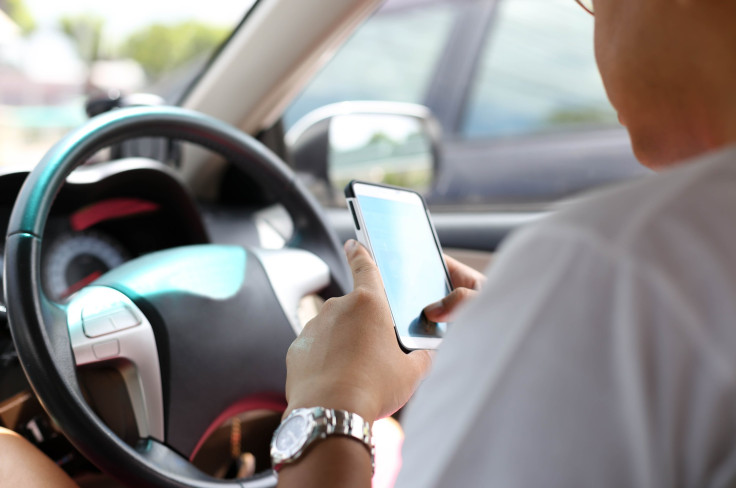Middle-Aged Adults Likely To Text And Drive, Even With Children In The Car

In 2013, 3,154 people were killed in motor vehicle crashes involving distracted drivers. One of the main culprits of taking drivers’ attention away from the road is the cell phone. We’ve heard it a million times: Don’t text and drive! Don’t talk on the phone either! The messages are everywhere, the scary commercials are still running, and we hear stories of texters crashing into oncoming traffic, but the message still just isn’t getting through to some.
A new study published in the Journal of Transport & Health takes a look at an age group that has previously been underrepresented in studies about cell phone use and driving — middle aged adults. Teens and college students have always been the main focus of distracted driving research, but researchers at the University of Callifornia, San Diego chose to see how often established adults are using cell phones behind the wheel.
The scientists modified a study previously done with college students, giving a survey instead to adults between the ages of 30 and 64. 715 people completed the survey, 75 percent of which were women, and their average age was 46. The study asked participants about how their cell phone use and driving intersected: whether they texted at stop lights or in traffic, how often they use their cell phones in the car (both handheld and hands-free), and if they use a cell phone while driving with children in the car.
Some of the results were unsurprising. Seventy-five percent of the participants said they talk on the phone hands-free in the car, and 90 percent of them thought themselves capable or very capable drivers while doing so. Less than a third of the participants knew that talking on a device hands-free increases the risk of crashing as much as driving at the legal alcohol limit.
Jessa Engelberg, the lead author of the study said it was unfortunate, but they weren’t surprised by this data.
"What we were really interested in was whether factors like children and work obligations had an effect on people's behavior,” she said in a press release.
Apparently, the presence of children in the car did not affect drivers’ behavior. Drivers continued to use their mobile phones when they had child passengers, even with older children that were likely to mirror their driving behavior.
"One of the things we were worried about in the 30 to 64 age group was whether they would use their phones while driving as frequently as the teenagers and young adults did, especially with kids in the car," said Professor Linda Hill, co-author of the study. "The thing about middle-aged drivers is their passengers tend to be minors, and there's an issue of modeling if the adults are teaching them how to drive."
In addition, more than a third of the participants said they felt pressured to answer work-related calls while driving. Researchers said this suggested there was an opportunity to reduce distracted driving by working with companies to educate both employers and employees.
The team has already used the data to design an intervention funded by the California Office for Traffic Saftey. The researchers have worked with companies to train almost 7,000 employees to reduce distracted driving since the survey. The results, so far, have been positive: a sample of employees who had been through the program reported being less likely to text, more likely to put their phones away while driving, and more likely to ask people not to call while they’re driving.
"The survey really helped us design something that would change behavior and we're excited we've been able to use it to make a difference," Hill said. "We think our intervention should be more widely implemented. People need to hear information about the risks of distracted driving from different sources, like public health, law enforcement, and family. We're now working to get the message out, and hope to set up a system where we train trainers around the country."
Source: Engelberg J, Hill L, Rybar J, Styer T. Distracted driving behaviors related to cell phone use among middle-aged adults. Journal of Transport & Health. 2015



























